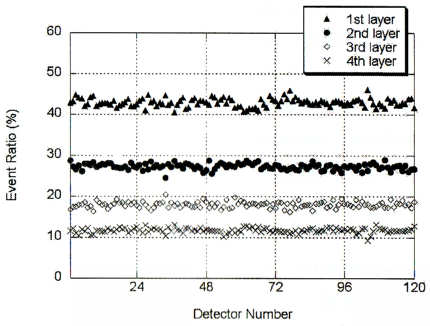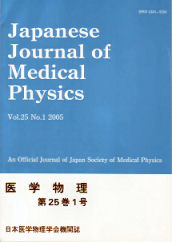| TITLE |
|---|
| AUTHORS |
| SOURCE |
(PMID: 17344644)
|
| ABSTRACT |
|
PET scanners are an important component in functional brain imaging devices. Several PET scanners have been developed during the last two decades for brain research studies. We are developing a high-performance brain PET scanner, jPET-D4. This scanner is designed to achieve not only high spatial resolution but also high sensitivity using four-layered depth-of-interaction (DOI) detectors. The scanner has five block detector rings with the ring diameter of 390 mm and each block detector ring consists of 24 DOI detectors. In previous work, we have demonstrated that 3 mm FWHM uniform spatial resolution within the field-of-view could be realized. In this paper, we describe the jPET-D4 system and evaluate its performance. The average energy resolution for 120 DOI detectors is optimized to 16.0% +/- 1.0%. The scatters fraction for this system is 40% with an energy window of 400-600 keV. The sensitivity for the point source is 102 kcps/MBq (10.2%) with a 400 keV LLD. Maximum noise equivalent count rate (NECR) is 154 kcps at 11 kBq/ml with a 10 ns coincidence time window. We evaluated scatter fraction and NECR following procedures based on NEMA NU2-1994. These first evaluation measurements indicate the jPET-D4 has good performance.
 Fig. 8. Uniformity of event ratio for DOI from a 511 keV uniform irradiation. |
| KEYWORDS |
| PET; depth-of-interaction; performance measurement |
